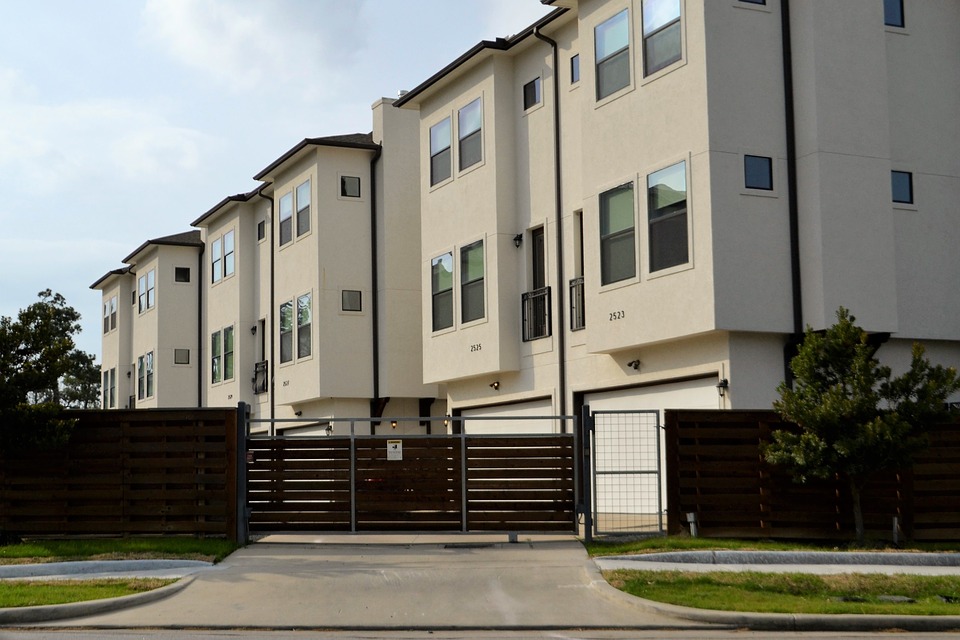The Great California Tax War
Experts Weigh in on Proposition 15’s Possibilities
Capital & Main speaks to local leaders and policy authorities about the potential effects of Prop. 15’s passage.

Until 1978, property taxes in California had funded everything from schools to parks to fire services. But following Proposition 13’s passage that year, those responsibilities have been off-loaded onto local communities and individuals in the form of a bewildering array of fees. Today Proposition 15 seeks to redress this system by removing the low-tax protections that commercial property owners have shared with homeowners for four decades. (See our coverage of Prop. 15.)
If Prop. 15 passes, many corporate properties throughout California, including those owned by Chevron and Walt Disney Studios, would see their tax assessments dramatically rise. An analysis by the California Legislative Analyst’s Office calculates that a reassessment of property values could provide between $6.5 billion and $11.5 billion in funding for local governments and schools.
Prop. 15’s opponents claim the measure would raise taxes on commercial properties, causing landlords to raise rents on businesses, who in turn will pass on their extra expenses to consumers. In this chain reaction scenario, the cost of living will ultimately rise for all Californians. The California Chamber of Commerce, in attacking the initiative, has also accused the measure of being part of a Trojan horse strategy to whittle away at Proposition 13. “As their first step in destroying Proposition 13,” CalChamber has said, “proponents are trying a ‘divide and conquer’ approach.”
Capital & Main recently spoke to local leaders and policy experts not to seek their positions on Prop. 15 but to ask what their expectations would be should voters approve its passage. (Disclosure: Two of Prop. 15’s biggest donors, the California Teachers Association and SEIU California State Council, are financial supporters of this website.)
The Mayor
Rey Leon is the mayor of Huron, population 8,000. Many residents in this Fresno County town, tucked near the heart of California’s Central Valley, are farmworkers and many are monolingual Spanish speakers. Leon, entering his third term as mayor, calculates Huron would accrue $84,000 annually in direct funding from Prop. 15 and benefit from funds allotted to county controlled agencies.
* * *
REY LEON: Eighty-four thousand dollars per year will help us in the maintenance of the future Plaza Park [in downtown Huron] and general maintenance of Main Street. It can also help us leverage more  resources to improve the community, advance the quality of life. Eighty-four thousand dollars is direct impact, [but] the park and recreation district is going to be getting $326,000. Additionally, the unified school district is getting $3 million. If we get our [share] then that’s $1,209,010 allotted to benefit Huron students in the Coalinga-Huron Unified School District.
resources to improve the community, advance the quality of life. Eighty-four thousand dollars is direct impact, [but] the park and recreation district is going to be getting $326,000. Additionally, the unified school district is getting $3 million. If we get our [share] then that’s $1,209,010 allotted to benefit Huron students in the Coalinga-Huron Unified School District.
The Housing Advocate
David Zisser is associate director of the advocacy organization Housing California, which works to prevent homelessness. He has also served as a Housing Fellow at New York City’s Department of Housing Preservation and Development.
* * *
DAVID ZISSER: The hope is that Prop. 15 will free up resources and allow local jurisdictions to invest in building new, affordable housing, preserving existing affordable housing, allow counties to invest in homeless services and rental assistance to get people off the streets.
We’re going to be feeling the effects of COVID well into the foreseeable future. An important point about Prop. 15 is that it is a sustainable, ongoing source of funding. It’s predictable, it’s reliable, and jurisdictions can plan for it and budget for it.
It’s going to be important for community-based organizations and residents to show up and make a case for how those funds should be spent at the local level, [to] really push their local decision makers to invest some of those resources in addressing housing affordability and homelessness.
The Economic Development Planner
Richard France is a strategic planner at Estolano Advisors, and author of the LA2050 report, which assessed the health of the region based on indicators of human development—local amenities that support community health and advancement. He’s a board member of the Los Angeles League of Conservation Voters.
* * *
RICHARD FRANCE: With Prop. 13, California voters starved local governments of what they needed to perform their basic functions. Voters [over] a generation ago effectively limited financial resources for our high-need communities as they relate to infrastructure, social services and providing educational opportunities. In the wake of that, and as we look at L.A. in particular, voters have consistently affirmed the need for more local finances – and they’ve been willing to tax themselves to support those investments.
What comes to mind are the sales taxes, ballot measures and fees [Los Angeles voters have supported]. That includes Measure W — the stormwater parcel tax. Measure H– for homeless services and housing. Measure A—the continuation of a parcel tax to support local parks and open space, and Measure M for transportation.
Voters have consistently said we want our government to do better and we want to tax ourselves and we are willing to pay for it. I feel like Prop. 15 is something that’s being pitched as going to schools and supporting education, which is superimportant. But 60% of the remaining revenue goes back to things that could support good governance–we could do things like equitable transportation, infrastructure support for high-need communities, integrated storm water management.
Voters should continue to be engaged on this issue. It won’t be enough to vote for the passage of Prop. 15 and walk away. I’m fully supportive of more dollars for local governments, but it will also be on voters [and our communities] to support [and elect] local representatives who are going to make sure that money is spent in a way that fosters more equitable and just outcomes.
The Educator
Joel Vaca is a Los Angeles educator who began his career as a math teacher at the Robert F. Kennedy Community Schools. He now works (remotely) as a community school coordinator. (Community schools are public schools that support students who are homeless, expelled from school or who are referred because of attendance or behavior problems.) He has experienced the ongoing cuts triggered by the Prop. 13 tax system.
* * *
JOEL VACA: I was at the RFK Community School [campus] right where the old Ambassador Hotel used to be. In the 10 years I taught there, not once did we have a consistent and fully staffed janitorial component, which meant that classrooms went without having the trash cans emptied, without the sweeping of a classroom at night. Our elementary school teachers had to vacuum the community rug.
Thanks to the [United Teachers Los Angeles] strike of 2019, we figured out that there was a lot of money in coffers, in reserve funds, for rainy days. If this is not a downpour, I don’t know what is.
So—we use that reserve money now. In order to be able to have students go back, we need to have a system by which we’re going to go ahead and test the students regularly for COVID.
Then use the Prop. 15 monies to do all the things that our strike fought for–like lowering class sizes, making sure we all have a nurse on every campus every day of the week. Make sure that our counseling [ratio] is lower than 800 to one counselor, which it is currently. That’s not counseling – you’re just managing a schedule at best. What I’m talking about is maybe four social workers and psychiatrists at each school site because of the trauma that the students are facing. And then be able to get all the equipment that we need. Hire a great custodial staff that’s going to be able to maintain our clean facilities.
The Scholar of Schooling
John Rogers is a professor at UCLA’s Graduate School of Education and Information Studies and director of UCLA’s Institute for Democracy, Education, and Access (IDEA).
* * *
JOHN ROGERS: The money generated by Prop. 15 has to be divvied up between local governments and public education–it would translate to somewhere between $375 and $665 for every elementary, middle school and high school student in California. If you have 250 students at your school, it means somewhere between $93,000 and $166,000 for a small school. Two hundred fifty students is a very small school.
That means you get somewhere between one and two additional staff members. In a small school, having a couple of extra teachers or having an extra teacher [and] an extra social worker could really make a substantial difference–both in terms of the size of classes and enhancing the amount of attention each student gets.
If you have a thousand [students] you’re talking about somewhere between $500,000 and $700,000 [per school].
I would expect that it’ll go primarily towards more teachers to reduce class size, or to counselors, psychologists, social workers, who can provide a set of supports, or to community educators, community liaisons, that are connecting the school to the broader community. If we think about these additional dollars as allowing schools to have more well trained and caring staff, that’ll make a difference in young people’s lives. I think that’s the way to think about this investment.
The Urban Planner
Donald Spivack is an adjunct professor at the USC Sol Price School of Public Policy who worked in the Los Angeles Community Redevelopment Agency for nearly three decades and has worked in city planning in Washington, D.C.,Detroit, Boston and Philadelphia. When Spivack, a regular public transit user, considers available local funding, he thinks about the challenge of a commute’s “first mile/last mile,” especially during the pandemic, for those using public transportation systems. Bus lines tend to roll along main traffic arteries—but commuters are on their own making it to their apartments blocks away.
Spivack would spend Prop. 15 funds on first-mile/last mile transportation—in Los Angeles, that means beefing up the low-cost DASH system that connects local neighborhoods to regional transit systems to get people to their jobs, and perhaps to arrange a local government collaboration with rideshare companies.
* * *
DONALD SPIVACK: People who are going to work early in the morning or late at night don’t want to walk in the dark. One focus of Prop. 15 is to provide money for first responders and education. A lot of the money is being devoted to education, but first responders don’t work on a normal 9 to 5 schedule. That first mile/last mile issue specifically deals with support personnel in emergency rooms, people working in hospitals. By first responders I don’t necessarily mean firemen and police officers and doctors, but people who work in grocery stores, people who work in deliveries, primarily not-well-paid service workers, people who work, say, in service and delivery and support and tend to work odd hours. Transit systems are set up to deal with people who work 9 to 5. They’re not set up to deal with people who work a 7 to 3 shift or a 3 to 11 shift.
[With Prop. 15,] money gets allocated to counties, [which] have a formula to distribute it to the local jurisdictions. A portion comes off the top for the schools and then it would be up to the jurisdiction to decide that transportation would be a priority or affordable housing would be a priority — or whatever else.
The simple, short term thing–if the jurisdictions get around to doing it–is funding people to be able to pay their rent [as we face a wave of evictions] and stay where they are. This doesn’t add to the housing supply, but it reduces the numbers of people being evicted.
Photo Credits. Richard France interview: Ted Soqui; Joel Vaca interview: Justin Sullivan/Getty Images; John Rogers interview: Pandora Young; Donald Spivack interview: Buchanan-Hermit.
Copyright 2020 Capital & Main

-

 Locked OutDecember 16, 2025
Locked OutDecember 16, 2025This Big L.A. Landlord Turned Away People Seeking Section 8 Housing
-

 Locked OutDecember 23, 2025
Locked OutDecember 23, 2025Section 8 Housing Assistance in Jeopardy From Proposed Cuts and Restrictions
-

 The SlickDecember 19, 2025
The SlickDecember 19, 2025‘The Poor Are in a Very Bad State’: Climate Change Accelerates California’s Cost-of-Living Crisis
-

 Locked OutDecember 17, 2025
Locked OutDecember 17, 2025Credit History Remains an Obstacle for Section 8 Tenants, Despite Anti-Discrimination Law
-

 Latest NewsDecember 22, 2025
Latest NewsDecember 22, 2025Trump’s War on ICE-Fearing Catholics
-

 Column - State of InequalityDecember 18, 2025
Column - State of InequalityDecember 18, 2025Beyond Hollywood, Rob Reiner Created Opportunity for Young Children Out of a Massive Health Crisis
-

 Striking BackDecember 17, 2025
Striking BackDecember 17, 2025‘There’s Power in Numbers’
-

 Column - State of InequalityDecember 24, 2025
Column - State of InequalityDecember 24, 2025Where Will Gov. Newsom’s Evolution on Health Care Leave Californians?






